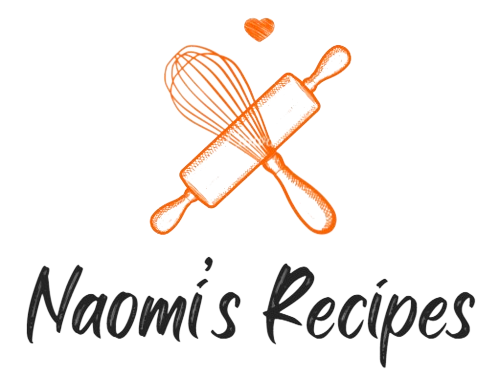Chicken Cordon Bleu is a classic dish believed to have Swiss origins, although its exact history is somewhat debated. The name “Cordon Bleu” means “Blue Ribbon,” originally associated with high culinary standards in French cuisine. The dish evolved to feature chicken, cheese, and ham, rolled together and breaded.
Why It’s a Popular Dish
Chicken Cordon Bleu is beloved for its rich flavors and elegant presentation. The combination of tender chicken, melted cheese, and savory ham offers a satisfying and indulgent experience, making it a popular choice for both home cooking and special occasions.
Overview of the Recipe and Its Appeal
The recipe involves flattening chicken breasts, stuffing them with ham and cheese, then breading and cooking until golden and crispy. The dish is often paired with a creamy sauce, adding to its luxurious appeal. Its versatility and the balance of textures make it a favorite among many.
Ingredients Breakdown
Main Ingredients
- Chicken Breasts: Choosing the Right Cut and Quality
For Chicken Cordon Bleu, boneless, skinless chicken breasts are ideal. Look for high-quality, fresh chicken, preferably organic or free-range, as it tends to be more tender and flavorful. The size and thickness of the breasts are crucial since they need to be pounded thin for even cooking and to properly wrap around the filling. - Swiss Cheese and Ham: Why These Are Traditional Choices
Swiss cheese, known for its mild flavor and excellent melting properties, is a classic choice for Chicken Cordon Bleu. It complements the salty, savory taste of ham, traditionally used in this dish. The ham adds both flavor and texture, creating a delightful contrast with the creamy cheese and tender chicken.
Supporting Ingredients
- Panko Breadcrumbs: Crispiness and Texture
Panko breadcrumbs are favored for their light, airy texture that results in a crispier coating compared to regular breadcrumbs. This ensures that the exterior of the Chicken Cordon Bleu is beautifully golden and crunchy, providing a satisfying contrast to the soft, melty interior. - Spices: Enhancing the Flavor
Simple spices like salt, pepper, and sometimes garlic powder are used to enhance the natural flavors of the chicken and the filling. These seasonings are crucial for ensuring the dish isn’t bland, bringing out the richness of the cheese and ham. - The Importance of Fresh Parsley for Garnish
Fresh parsley adds a pop of color and a hint of freshness to the finished dish. It’s often sprinkled on top just before serving, providing a visual appeal and a slight herbal note that balances the richness of the Chicken Cordon Bleu.
Preparation Steps
Flattening the Chicken
- Why It’s Essential for Even Cooking
Flattening the chicken breasts ensures that they cook evenly, preventing the exterior from overcooking while the interior remains undercooked. It also makes the chicken easier to roll and ensures that the filling is well-distributed. - Tips for Using a Meat Tenderizer Effectively
To flatten the chicken, place the breast between two sheets of plastic wrap or parchment paper. Use a meat tenderizer or rolling pin, starting from the center and working outwards, to gently pound the chicken to an even thickness of about ¼ inch. This process should be done with controlled, even strokes to avoid tearing the meat.
Stuffing the Chicken
- Layering the Swiss Cheese and Ham
Once the chicken is flattened, layer a slice of Swiss cheese and a piece of ham on top. Ensure that the cheese and ham are cut to fit within the chicken breast, leaving a small border around the edges to prevent the filling from leaking out during cooking. - Techniques for Rolling the Chicken Tightly
Begin rolling the chicken from one end, tucking in the sides as you go to create a tight roll. The tighter the roll, the less likely it is that the filling will escape during cooking. Secure the rolled chicken with toothpicks or kitchen twine to hold it together while it cooks.
Bread Coating
- Step-by-Step Guide to Breading the Chicken
Prepare three shallow dishes: one with flour seasoned with salt and pepper, one with beaten eggs, and one with panko breadcrumbs. Dredge each chicken roll first in the flour, shaking off the excess, then dip it in the egg, and finally roll it in the breadcrumbs, pressing gently to ensure an even coating. - Importance of Chilling the Chicken Before Frying
Once breaded, chilling the chicken rolls in the refrigerator for at least 30 minutes helps the coating adhere better and prevents it from falling off during frying. It also helps the chicken hold its shape.
Cooking the Chicken
- Shallow Frying vs. Deep Frying: Pros and Cons
Shallow frying involves cooking the chicken in a small amount of oil, turning it to cook evenly on all sides. It requires less oil and results in a lighter dish, but the coating may not be as uniformly crispy. Deep frying, on the other hand, submerges the chicken completely in hot oil, producing a more consistently crispy crust but is heavier and more calorie-dense. - Baking to Ensure Thorough Cooking
After frying, the chicken rolls should be transferred to a preheated oven to finish cooking. This method ensures that the chicken is cooked through without burning the coating. Bake at 350°F (175°C) for about 20 minutes, or until the internal temperature reaches 165°F (74°C). - Checking the Internal Temperature for Doneness
Use a meat thermometer to check the internal temperature of the chicken. Insert the thermometer into the thickest part of the roll without touching the filling. The chicken is done when it reaches an internal temperature of 165°F (74°C). This step is crucial to ensure that the chicken is safe to eat while retaining its juiciness.
Making the Cheesy Dijon Sauce
Ingredients Overview
- Gruyere and Parmesan: Why These Cheeses Work Well
Gruyere and Parmesan are ideal for this sauce due to their distinct flavors and melting properties. Gruyere adds a creamy, nutty richness that complements the chicken, while Parmesan brings a sharp, salty note, adding depth and complexity to the sauce. - The Role of Dijon Mustard in the Sauce
Dijon mustard provides a subtle tanginess that cuts through the richness of the cheese, balancing the flavors and adding a slight sharpness. It enhances the overall taste without overpowering the sauce, making it more dynamic.
Step-by-Step Preparation
- Creating a Roux: Importance and Technique
Begin by making a roux, which is essential for thickening the sauce. Melt butter in a pan, then stir in an equal amount of flour. Cook the mixture over medium heat, stirring constantly, until it forms a smooth paste and turns a light golden color, about 2-3 minutes. This ensures that the flour cooks through, eliminating any raw taste. - Incorporating the Cheeses into the Sauce
Gradually add milk to the roux, whisking continuously to avoid lumps. Once the mixture is smooth and slightly thickened, slowly add the Gruyere and Parmesan, stirring until fully melted and integrated into the sauce. This creates a creamy, velvety texture.
Serving Suggestions
- Drizzling vs. Serving on the Side
The sauce can be drizzled over the Chicken Cordon Bleu for a luxurious finish or served on the side to allow guests to add as much or as little as they prefer. Drizzling creates a visually appealing presentation, while serving on the side allows for customizable portions. - Additional Herbs or Spices to Elevate the Flavor
Consider adding fresh herbs like thyme or chives for a burst of freshness. A pinch of nutmeg or white pepper can also enhance the sauce’s flavor, adding subtle warmth and complexity.
Tips and Tricks for Perfect Chicken Cordon Bleu
Common Mistakes to Avoid
- Overcooking or Undercooking the Chicken
Overcooking can dry out the chicken, while undercooking poses a food safety risk. Use a meat thermometer to ensure the internal temperature reaches 165°F (74°C). Cooking the chicken to just the right point will keep it tender and juicy. - Ensuring the Roll Stays Intact During Cooking
To prevent the filling from leaking out, make sure to roll the chicken tightly and secure it well with toothpicks or kitchen twine. Chilling the rolled chicken before cooking also helps it maintain its shape.
Time-Saving Tips
- Preparing the Chicken Ahead of Time
You can flatten and roll the chicken with the filling a few hours ahead or even the night before. Store the prepared rolls in the refrigerator, covered, until you’re ready to cook. This not only saves time but also helps the rolls firm up, making them easier to cook. - Making the Sauce in Advance
The cheesy Dijon sauce can be prepared up to a day ahead. Reheat it gently over low heat, adding a splash of milk if it’s too thick. This allows you to focus on cooking the chicken without worrying about multitasking.
Customization Ideas
- Alternative Cheeses and Meats
While Swiss cheese and ham are traditional, you can experiment with other combinations. Try using smoked gouda or cheddar for a different flavor profile. Prosciutto or turkey can also be used in place of ham for a unique twist. - Adding Herbs or Spices for a Personal Twist
Incorporate fresh herbs like basil or rosemary into the filling for added flavor. You can also mix spices like paprika or garlic powder into the breadcrumbs for a more flavorful crust. These small changes can make the dish your own while maintaining its core appeal.
Pairing Suggestions and Serving Ideas
Side Dishes
- Vegetables That Complement Chicken Cordon Bleu
Steamed or roasted vegetables like asparagus, green beans, or broccoli are excellent choices. Their fresh, vibrant flavors balance the richness of the chicken and sauce. A simple side salad with a light vinaigrette also works well, adding a refreshing contrast. - Starches That Pair Well
Mashed potatoes, especially with garlic or herbs, make a comforting, hearty side. Rice pilaf or buttered noodles are also great options, providing a neutral base that allows the flavors of the Chicken Cordon Bleu to shine.
Wine and Beverage Pairings
- Best Wines to Serve with This Dish
A crisp, dry white wine like Chardonnay or Sauvignon Blanc complements the creamy sauce and rich flavors of the dish. For red wine lovers, a light Pinot Noir can also work well. - Non-Alcoholic Options
Sparkling water with a splash of lemon or lime adds a refreshing touch. For a non-alcoholic wine alternative, try a high-quality grape juice with balanced sweetness, which pairs nicely with the dish’s savory elements.
Nutritional Information and Considerations
Calorie Breakdown
- Understanding the Nutritional Content
Chicken Cordon Bleu is a rich dish, often high in calories, fat, and sodium due to the cheese, ham, and breading. A typical serving can range between 400 to 600 calories, depending on portion size and ingredients used. - Adjusting the Recipe for a Healthier Option
To lighten the dish, consider using low-fat cheese, leaner cuts of ham, and whole wheat breadcrumbs. Baking instead of frying can also reduce fat content, making the meal more heart-friendly.
Dietary Modifications
- Making It Gluten-Free
Use gluten-free breadcrumbs and flour to make the dish suitable for those with gluten intolerance. Ensure all other ingredients, like ham and cheese, are certified gluten-free. - Adjusting for Lactose Intolerance or Low-Fat Diets
For lactose intolerance, opt for lactose-free cheese or a dairy-free alternative. To reduce fat, use low-fat cheese and skip the frying, opting for baking with minimal oil instead. These modifications help maintain flavor while catering to specific dietary needs.
FAQs Section
What is Chicken Cordon Bleu?
Chicken Cordon Bleu is a classic dish where chicken breasts are pounded thin, stuffed with ham and Swiss cheese, then breaded and cooked until golden and crispy.
Can I Use Other Types of Cheese?
Yes, you can substitute Swiss cheese with alternatives like Gruyere, mozzarella, or cheddar for a different flavor profile.
How Do I Prevent the Filling from Oozing Out?
To keep the filling intact, roll the chicken tightly, secure it with toothpicks, and chill the rolled chicken before cooking to help it hold its shape.
Can Chicken Cordon Bleu Be Made Ahead of Time?
Yes, you can prepare the chicken rolls in advance, refrigerating them until ready to cook. This is a great way to save time on the day you plan to serve the dish.
What Is the Best Way to Reheat Leftovers?
Reheat leftovers in the oven at 350°F (175°C) until warmed through to maintain the crispiness of the breading. Avoid microwaving, as it can make the breading soggy.
Conclusion and Final Thoughts
Recap of the Dish’s Appeal
Chicken Cordon Bleu remains a timeless favorite due to its rich flavors, satisfying textures, and elegant presentation. The combination of tender chicken, melted cheese, and savory ham wrapped in a crispy coating makes it a beloved classic for any occasion.
Encouragement to Try the Recipe at Home
This dish, while seemingly elaborate, is achievable with a bit of preparation. It’s a rewarding recipe that’s sure to impress.
Invitation for Feedback
We encourage you to try this recipe and share your experiences. Feel free to add your own twists, and let us know how it turned out!

Chicken Cordon Bleu
Description
Chicken Cordon Bleu is a sophisticated yet approachable dish where tender chicken breasts are filled with savory ham and Swiss cheese, coated in crispy breadcrumbs, and cooked to golden perfection. It’s often served with a rich, creamy Dijon sauce that complements the flavors beautifully. Perfect for special occasions or an indulgent dinner, this classic recipe combines texture and taste in a way that delights the palate.
Ingredients
CHICKEN:
- Four 6 to 8 ounce boneless chicken breasts
- 1 teaspoon salt, divided
- ½ teaspoon freshly ground black pepper, divided
- 8 ounces Swiss cheese, thinly sliced
- 8 ounces ham, thinly sliced
- ⅓ cup all purpose flour
- 2 large eggs, lightly beaten
- 1¼ cups panko bread crumbs
- ½ teaspoon garlic powder
- ½ teaspoon onion powder
- vegetable oil, for shallow frying
- minced fresh parsley, for garnish (optional)
CHEESY DIJON SAUCE:
- 1½ tablespoons unsalted butter
- 1½ tablespoons all purpose flour
- 1 cup milk, warmed
- 1 teaspoon Dijon mustard
- ¼ teaspoon garlic powder
- ¼ teaspoon onion powder
- ¼ teaspoon salt
- ⅛ teaspoon fresh ground black pepper
- ¾ cup shredded Gruyere cheese
- ¼ cup grated Parmesan cheese
Instructions
PREPARE THE CHICKEN:
-
Place 1 chicken breast onto a large cutting board between 2 pieces of plastic wrap. Use a meat mallet to pound it out to about ¼ to ½-inch thick. Repeat this process with the remaining 3 chicken breasts.
-
Lay the pounded chicken breasts out flat on a large cutting board and season with ½ teaspoon salt and ¼ teaspoon black pepper.
-
Place 2 ounces of Swiss cheese on each chicken breast, and top each with 2 ounces of ham. Starting with the smaller end of each chicken breast, roll it up into a tight log. Roll each log up tightly in plastic wrap, twisting the ends to close. Place the chicken logs onto a plate and refrigerate 30 minutes to 1 hour.
COOK THE CHICKEN:
-
When the chicken is fully chilled, get ready to bread and cook it. Preheat the oven to 350°F. Line a baking sheet with foil.
-
Put the flour into a shallow bowl. Lightly beat the eggs in a separate shallow bowl. To a third shallow bowl, stir together the panko breadcrumbs, remaining ½ teaspoon salt, remaining ¼ teaspoon black pepper, garlic powder, and onion powder.
-
To bread each chicken log, unwrap it from the plastic wrap. Dredge it in flour, shaking off the excess. Coat it in egg, letting the excess drip off. Lastly, roll it in the panko mixture.
-
Add about ½ an inch of oil to a large, deep frying pan. Heat over medium heat until the oil reaches 350°F. Add the breaded chicken to the hot oil (working in batches if necessary so you don’t overcrowd the pan), and cook until the chicken is golden on all sides. You can turn the heat down if necessary to keep the oil at around 350°F. This takes about 3 turns in the oil, and about 5 minutes. Once the chicken is golden, place all 4 pieces onto the prepared baking tray and bake at 350°F until they reach an internal temperature of 165°F, about 15 to 20 minutes.
MAKE THE SAUCE:
-
Add the butter to a saucepan over medium heat. Once melted, whisk in the flour and cook 1 minute, whisking constantly. Whisk in the milk. Turn down the heat to medium-low, and whisk in the Dijon, garlic powder, onion powder, salt, and black pepper. Bring up to a simmer, whisking constantly. Add half of the gruyere and whisk to combine. Whisk in the remaining half of the gruyere. Once fully incorporated, whisk in the parmesan.
SERVE:
-
Garnish the Chicken Cordon Blue with parsley and serve along with the Cheesy Dijon Sauce to drizzle on top.
Notes
For best results, make sure to pound the chicken evenly to ensure thorough cooking. If you prefer a healthier version, consider baking the chicken instead of frying, and opt for low-fat cheese. You can also prepare the chicken rolls ahead of time and store them in the refrigerator, making this a convenient option for busy nights or entertaining guests.









